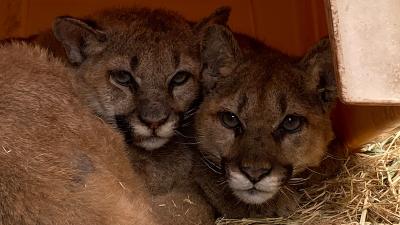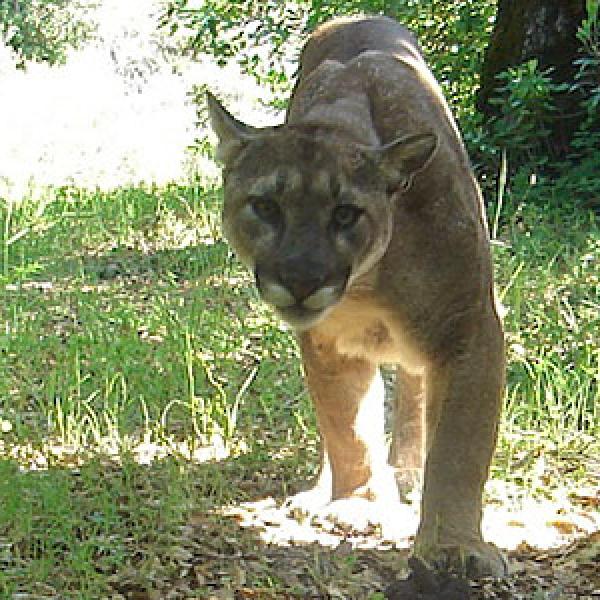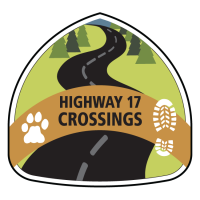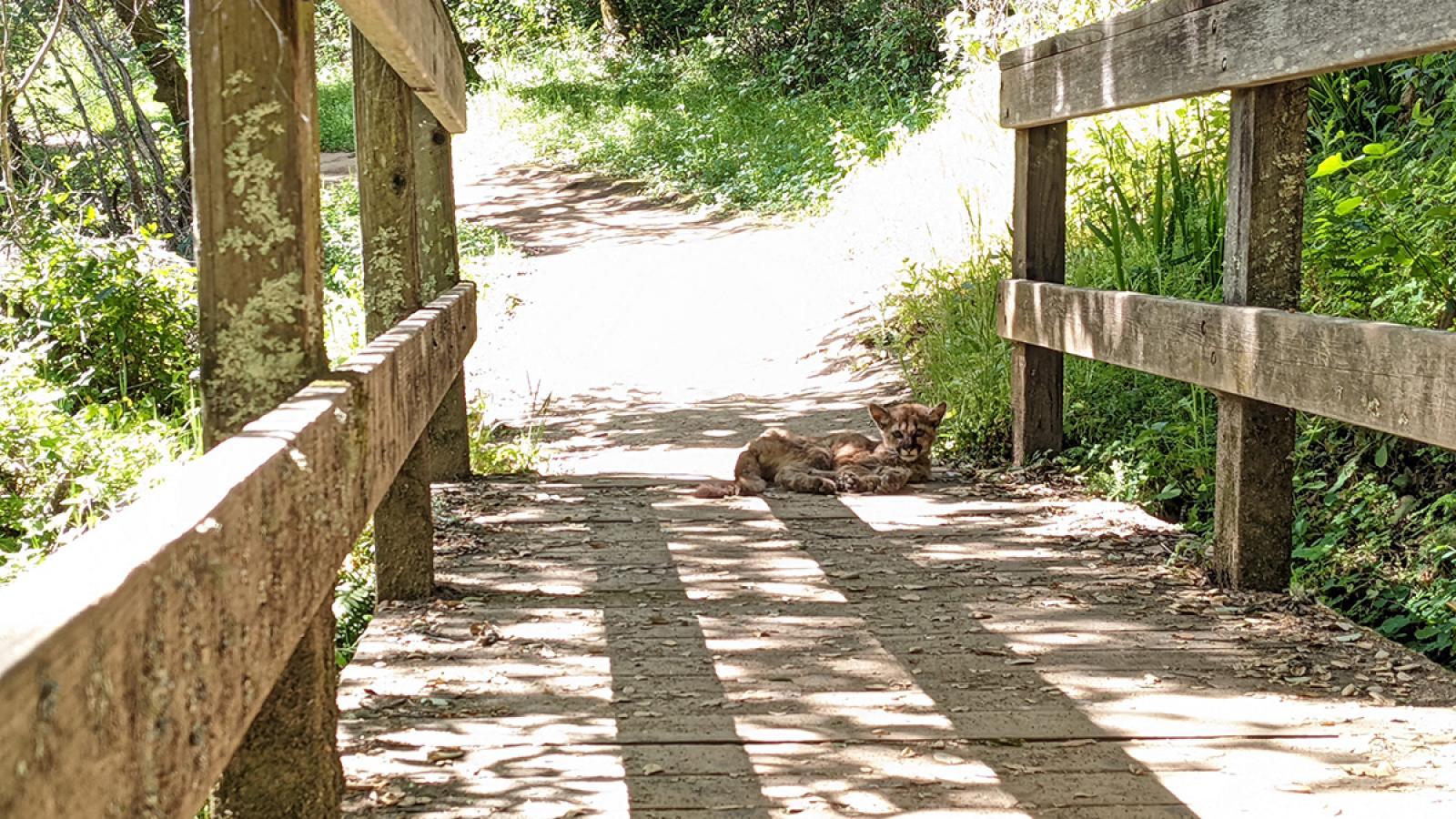If you’ve been following social media, you may have come across two mountain lion (puma concolor) cubs from this side of the Bay. Rose and Sage, as they have been named by Oakland Zoo staff, have been taken in by the zoo and are being nursed to health.
In April, Rose was spotted in the Thornewood Open Space Preserve by hikers who were surprised to see her laying in the open near a pedestrian bridge, since it's unusual to even catch a glimpse of these elusive cats. “Oftentimes, mountain lion mothers will leave cubs near a den while they hunt,” explained Midpen biologist Matt Sharp Chaney. However, after several cub sightings without reports of seeing the mother, staff temporarily closed the preserve for safety of both the public and the cub and notified the California Department of Fish and Wildlife (CDFW), which is responsible for managing wildlife across the state.
Based on her levels of extreme malnourishment, CDFW made the decision to intervene and transfer the 5-month-old cub to a medical facility at the Oakland Zoo. In June, a male mountain lion cub wandered into a Pescadero school classroom and was also transferred to the zoo, where big cat animal care staff named him Sage and introduced him gradually to Rose.

“With habitat loss and an increase in collisions with wildlife on roadways, orphaned cubs like these are unfortunately becoming more common,” Sharp Chaney said. Although the local population of mountain lions in the Santa Cruz Mountains appears to be doing fairly well in terms of numbers, there is research showing the genetic diversity is suffering due to habitat loss and limited connectivity to adjoining populations. “We know that, genetically speaking, our population seems to be at some risk,” he said.
Mountain lions are officially classified as "specially protected mammal" and are a candidate threatened species under the California Endangered Species Act. Midpen submitted a written letter in support of the listing decision in hopes that the new classification will protect the species from further genetic and geographic fragmentation. In addition to regulatory steps like this, Midpen is also engaged in mountain lion conservation research with the Puma Project and CDFW, as well as habitat connectivity projects such as the Highway 17 Wildlife and Trail Crossings project.
While Midpen continues to do what we can to help protect this iconic species, it is heartwarming to celebrate the survival of these two cubs.

Mountain lions, also known as pumas and cougars, play an important role as keystone predators in our local ecosystem. Their primary food source is deer, but they can also prey on smaller animals like raccoons, rabbits and even wild turkeys.
Find out how to identify a mountain lion, what to do if you encounter one and how to stay safe on the trails.

In the densely populated Bay Area, Midpen preserves provide critical remaining habitat for native wildlife, such as mountain lions and nearby nature for people. Midpen is conducting mountain lion conservation research to learn more about how mountain lions use open space lands also frequently visited by people. The results will help guide Midpen’s science-based land management practices.
Midpen supports effort to protect mountain lions

Midpen’s nearly 70,000 acres of preserved public open space provide prime habitat for mountain lions, a top predator in our region facing many challenges in our region. We’re working to protect regional mountain lion populations by preserving habitat, increasing habitat connectivity through the Highway 17 Wildlife Crossing Project, promoting rodenticide regulations and supporting research that improves our understanding of lion populations, ecology and behavior throughout our region of influence.

